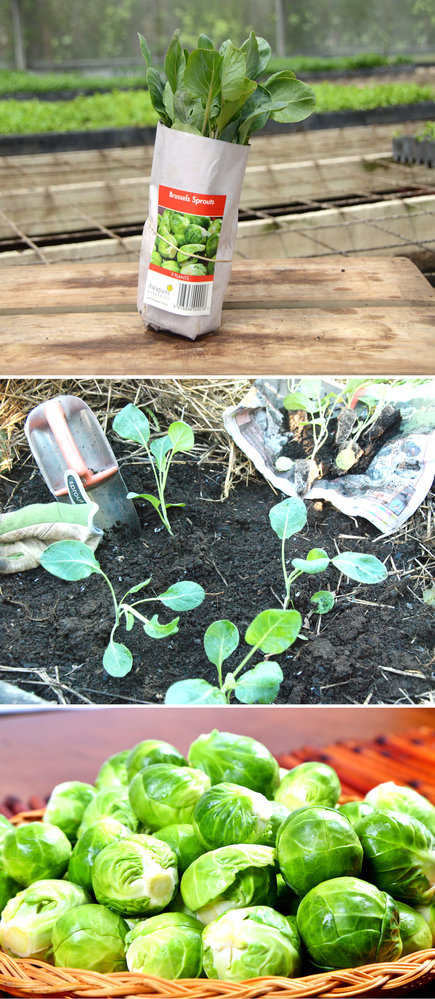That's right, I'm bringing brussels back - brussels sprouts that is.
Brussels sprouts have long been given a bad rap. They're the butt of many a joke. But I think most people who say they don't like them probably haven't even tried these mini-cabbages.
And I would argue the reason for all this sprout hatred is largely due to over-cooking. There's no doubting brussels sprouts smell terrible when they've been boiled to within an inch of their life.
But steam or fry these veges and they taste completely different. So in an effort to bring brussels back (much like Justin Timberlake brought sexy back) this month I'm going to tell you how to grow this oft-maligned brassica.
Get down to your local supermarket, Bunnings or The Warehouse and grab some seedlings. Alternatively, head to our online store and get them delivered direct to your door. One bundle has at least nine seedlings in it - so plenty for the whole family!
Speaking of family - if you're keen to get your kids to extend their culinary preferences to include brussels sprouts, get them involved in the planting. Food that you've grown yourself just tastes better.
The important thing to remember when picking a spot to plant is brussels sprouts shouldn't be grown where other brassicas, like cauliflower and broccoli, have been planted recently. Rotating your crops (planting them in a different spot from the season before) will help you prevent club root - a disease, which stops the heads on your brassicas from developing fully. Adding lime to the soil will also help prevent club root.
Simply dig a hole (approximately 3cms deep), place your seedling inside and cover the roots with soil. Space each seedling 50cms apart.
As my sprouts grow, I like to mound the soil up at the base. This prevents the plants from falling as they get taller. If they still look unstable you can also stake them.
Watch out for pests like white butterflies, caterpillars and aphids.
As your plants mature you'll be able to see the sprouts forming where the leaves leave the main stem. Much like pruning tomatoes, it's important to prune your plants to ensure they can focus all their efforts on growing sprouts - not leaves. So, as the sprouts get bigger, gently pull away the leaves from the plant.
Once your sprouts reach slightly smaller than the size of a golf ball, they're ready for harvesting. Simply pick the ones you need for that evening's meal off the stem of the plant and leave it grow more.
If you've got kids experiment with picking off the sprouts at different stages of growth to work out who likes which size best.
So, what are you waiting for? Help me bring brussels back!

